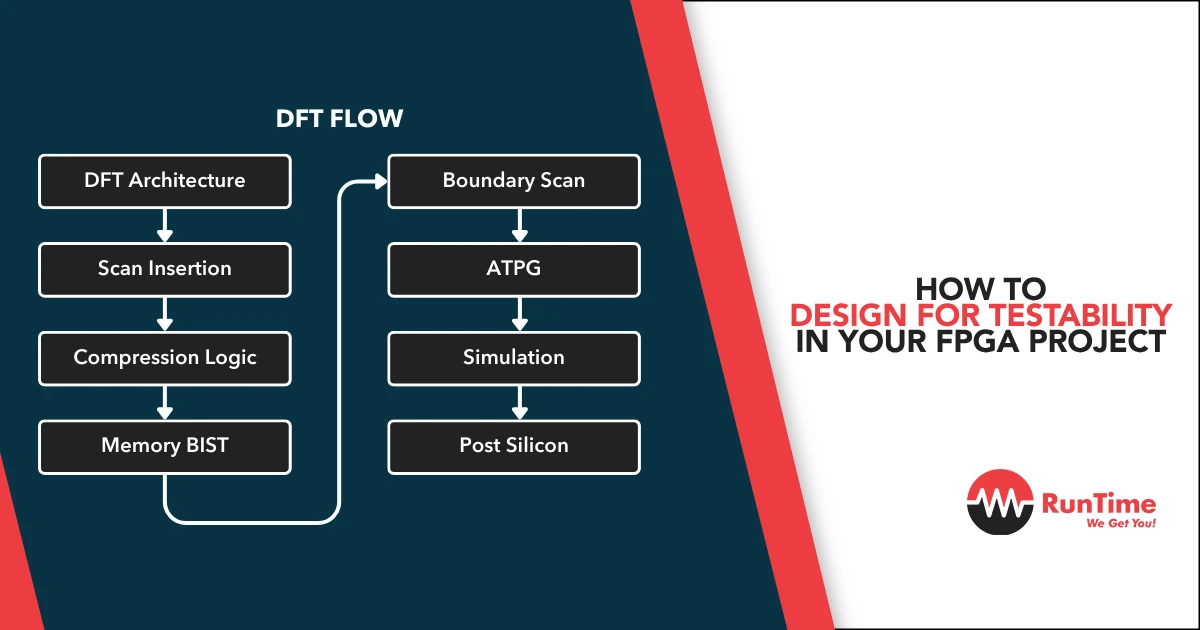In pursuit of flawless FPGA implementations, Design for Testability (DFT) emerges as a cornerstone strategy. By integrating test features from the outset, we empower ourselves to streamline debugging, expedite fault detection, and ultimately, bolster confidence in the final product. This article covers the technical depths of DFT, exploring innovative techniques and offering an analytical perspective to elevate your FPGA design methodology.
The Pillars of DFT: Controllability and Observability
At the heart of DFT lies the inseparable duo of controllability and observability. Controllability ensures the ability to stimulate specific internal nodes of the design with defined test patterns. Observability, on the other hand, guarantees the ability to capture the responses from these nodes and analyze them for correctness. By meticulously considering these aspects during design, we pave the way for comprehensive testing.
Innovation in DFT: A Proactive Approach
Let’s delve into some innovative DFT techniques that transcend traditional boundaries.
- Scan Insertion: Embedding scan chains within the design allows us to serially load test vectors into internal registers, significantly enhancing controllability. This powerful technique, however, necessitates careful area and timing overhead analysis.
- Built-In Self-Test (BIST): BIST empowers the FPGA to generate test patterns internally and evaluate the results autonomously. This not only reduces reliance on external test equipment but also facilitates on-chip diagnostics. However, crafting efficient BIST logic requires a thoughtful trade-off between test coverage and hardware overhead.
- Boundary Scan (JTAG): Leveraging the IEEE 1149.1 standard, JTAG provides a standardized interface for testing interconnected components within the FPGA. This non-intrusive approach streamlines testing procedures, particularly for complex board-level designs.
Analytical Perspective: Optimizing the DFT Strategy
A key aspect of DFT lies in adopting an analytical approach to optimize the strategy for the specific design. Here’s where our technical prowess comes into play:
- Fault Coverage Analysis: Employing fault simulation tools, we can pinpoint the most probable faults within the design. This valuable insight allows us to strategically target our DFT efforts towards those critical areas, maximizing fault detection efficiency.
- Test Pattern Optimization: By analyzing the design’s logic structure, we can craft test patterns that exercise a high percentage of the logic with minimal redundancy. This optimization ensures comprehensive testing while minimizing test execution time.
The Pragmatic Approach: Balancing Benefits and Trade-offs
While DFT offers undeniable advantages, it’s crucial to acknowledge the associated trade-offs. DFT techniques often introduce additional hardware overhead, potentially impacting area utilization and power consumption. Here, the key lies in striking a pragmatic balance between achieving a desired level of test coverage and maintaining an area and power-efficient design.
Wrapping Up
By embracing DFT principles, we elevate FPGA design from a reactive to a proactive endeavor. By integrating test features from the get-go, we empower ourselves to swiftly identify and rectify faults, ultimately leading to a more robust and reliable product. Remember, DFT is not an afterthought; it’s a strategic investment in the success of your FPGA project.
Hire the Best Engineers with RunTime
At RunTime, we are dedicated to helping you find the best Engineering talent for your recruitment needs. Our team consists of engineers-turned-recruiters with an extensive network and a focus on quality. By partnering with us, you will have access to great engineering talent that drives innovation and excellence in your projects.
Discover how RunTime has helped 423+ tech companies find highly qualified and talented engineers to enhance their team’s capabilities and achieve strategic goals.
On the other hand, if you’re a control systems engineer looking for new opportunities, RunTime Recruitment’s job site is the perfect place to find job vacancies.









